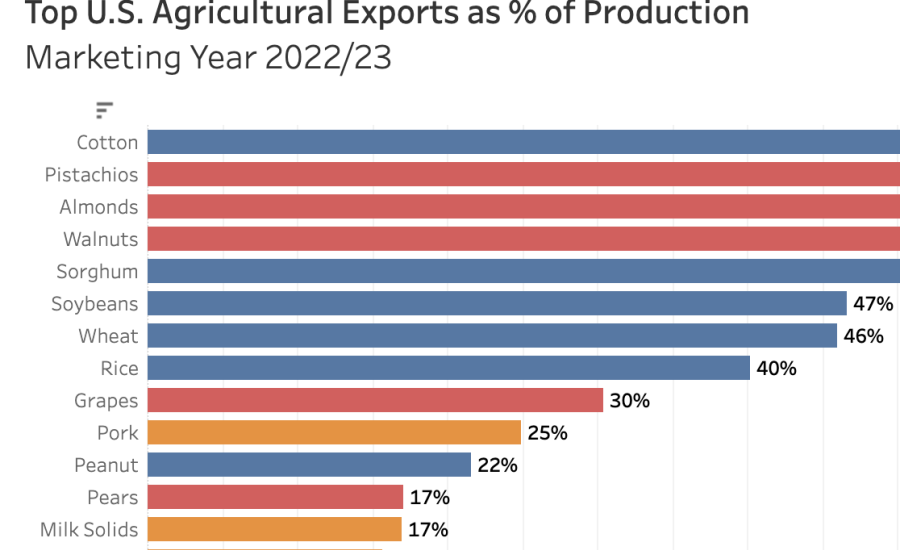Browse Data and Analysis
Filter
Search Data and Analysis
- 12 results found
- (-) Cotton
- (-) March 2025
- (-) May 2024
- Clear all
For marketing year (MY) 2025/26, Post forecasts a slight increase in cotton imports due to increasing demand in the ready-made garments industry.
FAS Mumbai forecasts marketing year (MY) 2025/26 India cotton production at 25 million 480 lb. bales on 11.4 million hectares of planted area, a three percent decrease from the previous year due to an expected shift of planted area to higher-return crops such as pulses and oilseeds.
Driven by a minor increase in area and assuming average yields, cotton production is expected to increase somewhat in 2025/26. With expectations for continued strong export demand, domestic use is forecast to grow modestly in 2025/26.
This monthly report includes data on U.S. and global trade, production, consumption and stocks, as well as analysis of developments affecting world trade in cotton.
Monthly report on crop acreage, yield and production in major countries worldwide. Sources include reporting from FAS’s worldwide offices, official statistics of foreign governments....
Ukraine established a simplified procedure for temporary registration of genetically engineered cotton varieties only.
U.S. agricultural exports are a critical source of farm income. The USDA Economic Research Service estimates that on average 23 percent of the output of nonmanufactured agricultural products were exported between 2013 and 2022.
Early spring precipitations in Andalucía came as a relief, refilling water reservoirs. However, this allowed for only a marginal recovery in area planted to cotton, as rains arrived when planting plans were already in place and largely oriented to less water-demanding crops such as winter grains or early spring-planted sunflower.
The 2023 U.S. Agricultural Export Yearbook provides a statistical summary of U.S. agricultural commodity exports to the world during the 2023 calendar year.
Monthly report on crop acreage, yield and production in major countries worldwide. Sources include reporting from FAS’s worldwide offices, official statistics of foreign governments....
This monthly report includes data on U.S. and global trade, production, consumption and stocks, as well as analysis of developments affecting world trade in cotton.
The global cotton industry is still readjusting to lower post-pandemic demand, and Uzbekistan wasn’t spared the effects of the market overhang. Uzbekistan's strong vertical integration and government support for the industry have helped drive both its resiliency and recovery.

